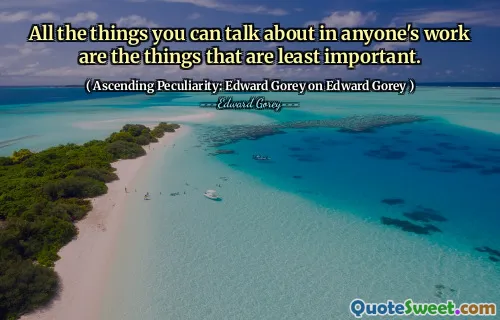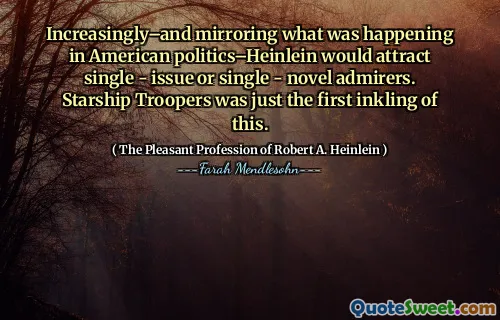...lifeless and shockingly alien in that place where dissolution itself was a seething turmoil of ejaculation tumescence conception and birth, and death did not even exit.
In William Faulkner's "Go Down, Moses," the narrative explores a setting marked by an intense and chaotic life cycle. The description evokes a stark contrast between the vitality of creation and the absence of death, underlining a world where life is both overwhelming and disorienting. The imagery of dissolution as a "seething turmoil" suggests a continuous cycle of existence where birth and vitality coexist without the finality of death, creating a surreal and alien environment. Faulkner's portrayal conveys a sense of unease, presenting life as an uncontrollable force. This perspective challenges conventional notions of existence, where death is typically a part of the life cycle. Instead, the text immerses readers in a realm where the boundaries between life and death blur, highlighting the profound complexities of nature and existence itself. Through this examination, Faulkner invites readers to reflect deeply on the chaotic and often paradoxical nature of life.
In William Faulkner's "Go Down, Moses," the narrative explores a setting marked by an intense and chaotic life cycle. The description evokes a stark contrast between the vitality of creation and the absence of death, underlining a world where life is both overwhelming and disorienting. The imagery of dissolution as a "seething turmoil" suggests a continuous cycle of existence where birth and vitality coexist without the finality of death, creating a surreal and alien environment.
Faulkner's portrayal conveys a sense of unease, presenting life as an uncontrollable force. This perspective challenges conventional notions of existence, where death is typically a part of the life cycle. Instead, the text immerses readers in a realm where the boundaries between life and death blur, highlighting the profound complexities of nature and existence itself. Through this examination, Faulkner invites readers to reflect deeply on the chaotic and often paradoxical nature of life.





